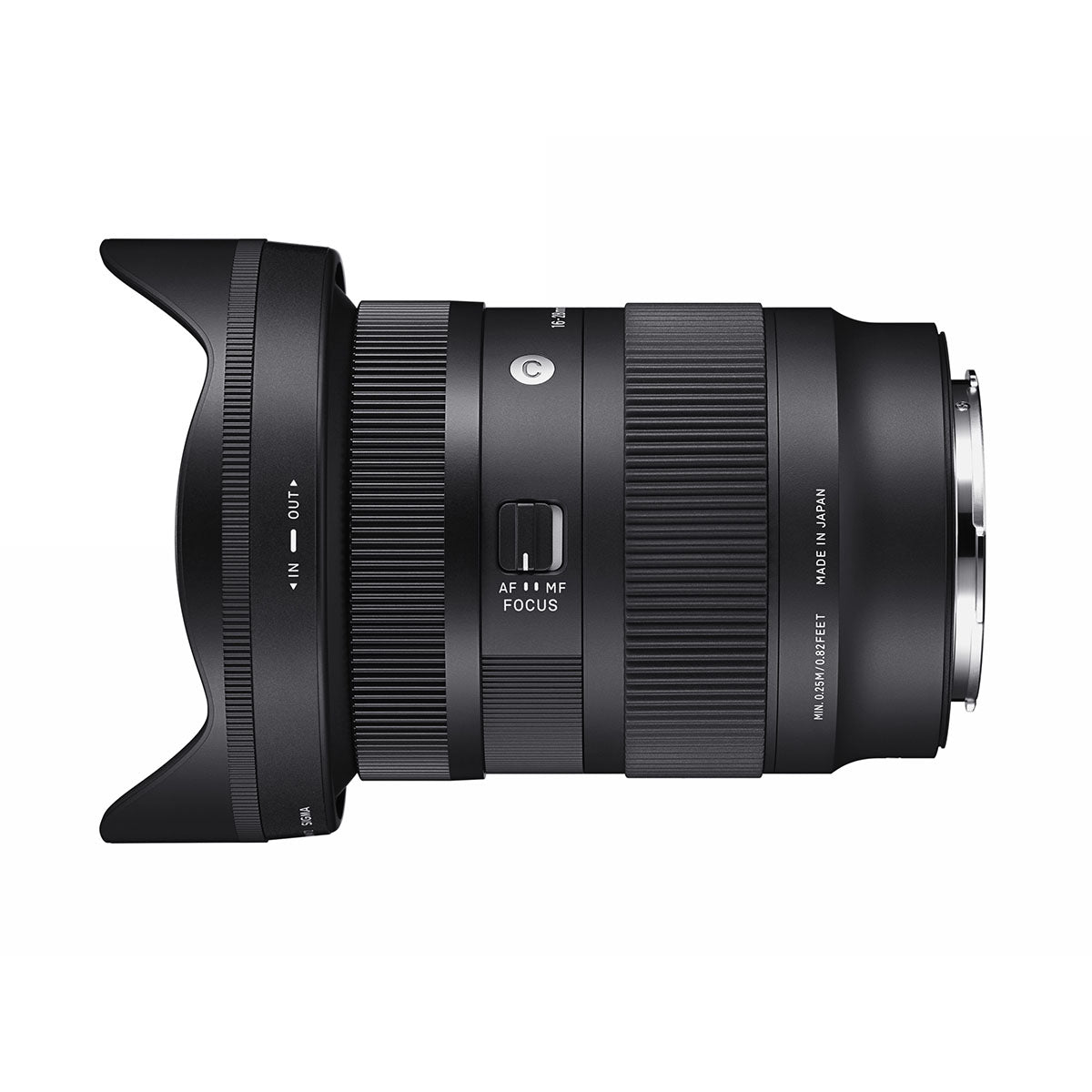What we think...
Product Description
Sigma 16-28mm f/2.8 DG DN Contemporary Lens for Sony E
Compact Ultra-Wide Zoom for Full-Frame Mirrorless Cameras
The Sigma 16-28mm f/2.8 DG DN Contemporary Lens combines a versatile ultra-wide zoom range with a constant f/2.8 aperture, making it a powerful yet portable choice for photographers and videographers. Designed for Sony E-mount full-frame cameras, this lens delivers exceptional optical performance in a lightweight, travel-friendly package.

Key Features
Versatile Ultra-Wide Range
- 16-28mm Focal Length: Perfect for landscapes, architecture, interiors, and creative perspectives.
- Constant f/2.8 Aperture: Ensures consistent performance in low-light scenarios and enables beautiful background separation.
Exceptional Optical Performance
- Utilises aspherical and low-dispersion glass elements to reduce chromatic aberrations for outstanding clarity and colour accuracy.
- Super Multi-Layer and Nano Porous Coatings: Minimise flare and ghosting, improving contrast and colour rendition even in strong lighting conditions.
Compact and Lightweight Design
- Internal Zoom and Focus: Maintains constant lens dimensions for better balance, ideal for gimbals and video work.
- Portable Construction: Designed to be small and lightweight without sacrificing image quality.
Professional Build Quality
- Weather-Sealed Construction: Ensures durability and reliability in challenging environments.
- Rounded 9-Blade Diaphragm: Produces smooth, attractive bokeh for shallow depth-of-field shots.

Additional Features
- Stepping AF Motor: Delivers fast, quiet, and accurate autofocus, ideal for both stills and video.
- Compatible with Sigma UD-11 USB Dock: Allows for firmware updates and customisation of lens settings.
- Fixed Front Element: Ideal for using circular filters such as ND or polarizers, enhancing versatility for creative work.

Technical Specifications
- Format: Full-Frame
- Aperture Range: f/2.8 to f/22
- Lens Construction: Specialised aspherical and low-dispersion elements
- Diaphragm Blades: 9 (rounded)
- Focus Type: Internal focusing with Stepping AF Motor
- Weight: Lightweight for portability
- Mount: Sony E

The Sigma 16-28mm f/2.8 DG DN Contemporary Lens is an outstanding ultra-wide zoom for photographers and videographers seeking high performance in a compact design. Its constant f/2.8 aperture, weather-sealed construction, and professional-grade optics make it an excellent choice for creative projects in any environment.
Payment & Security
Your payment information is processed securely. We do not store credit card details nor have access to your credit card information.
























